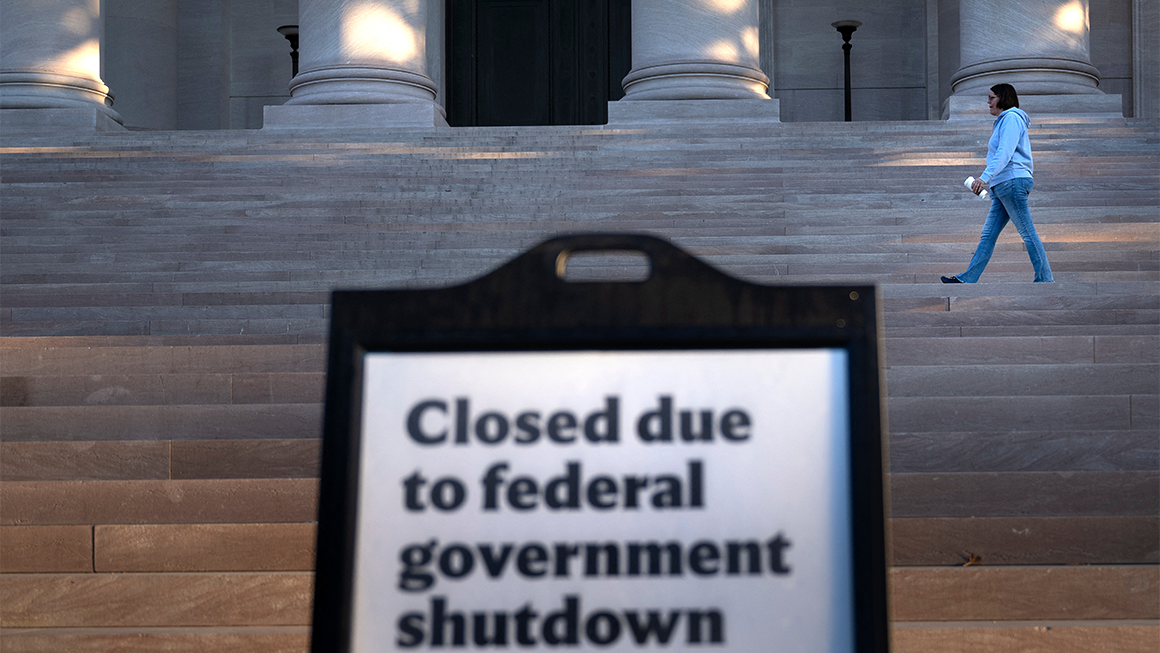
During a federal government shutdown, more than just public facilities and services get shuttered or restricted. As the grants, payments, and reimbursements the federal government provides to nonprofits are paused or put at risk, nonprofits may also have to reduce or stop providing the critical programs and supports they offer communities nationwide—including mental health services, job training, and disaster relief.
The shutdown adds to a challenging financial environment for nonprofits. According to new Urban Institute research, many nonprofits were already facing financial instability before the shutdown because of government funding disruptions earlier this year, limiting their ability to meet community demand, especially as it increases.
In this article, we explain nonprofits’ role in thriving communities, the amount of funding nonprofits receive from government sources, and the government funding challenges nonprofits were facing before the shutdown.
Nonprofits are critical community resources, especially in moments of upheaval
Nonprofits are a cornerstone of resilient communities, providing day-to-day services and critical supports when other parts of the safety net are delayed or unavailable. This is particularly true at moments of heightened need, such as after disasters or during a government shutdown.
As people feel the effects of the shutdown, such as gaps in assistance programs and delayed income for federal workers, the need for nonprofits’ services will grow, even as nonprofits are limiting their services. For example, the Capital Area Food Bank, which serves the Washington, DC, region, recently reported that, even before the shutdown, more than 40 percent of people affected by federal job losses and spending cuts were food insecure.
Government agencies rely on nonprofits nationwide
Excluding (PDF) foundations, hospitals, schools, and universities, two out of three service-providing public charities across the country (hereafter called nonprofits) receive at least one grant or contract from government agencies, according to data from the National Survey of Nonprofit Trends and Impacts. The largest nonprofits—which often have the most capacity to respond in times of emergency—are even more likely to report receiving government funding.
New Urban research shows the average nonprofit reports receiving 28 percent of its funding from the government, with 9 percent coming from the federal government, 11 percent from state governments, and 6 percent from local governments.
Even though they’re a critical part of the safety net, nonprofits would still face challenges with their finances and ability to meet demand without government funding. Analysis of the Internal Revenue Service’s full Form 990 data shows 60 to 80 percent of nonprofits that reported receiving government grants could fail to cover their expenses if they lost their government funding.
Many nonprofits were already facing financial challenges related to government funding cuts
Analyses of National Survey of Nonprofit Trends and Impacts data from 2024 and 2025 show that before the shutdown, many nonprofits were already facing financial instability. Increases in operational costs and upticks in community need left many of them stretched thin. Then, the first half of the year saw government funding cuts, freezes, and stop work orders that affected one-third of nonprofits.
These cuts likely had large impacts on nonprofits’ abilities to staff programs and deliver services. About a third of organizations that reported experiencing cuts also reported decreasing their total number of employees, and about a quarter reported decreasing their programs. Even nonprofits that did not receive government funding noted that government funding disruptions had shifted the broader funding environment, leaving many organizations financially uncertain.
Funding uncertainty and heightened demand will make it challenging for nonprofits to carry out their missions
The funding delays nonprofit organizations could experience from a long government shutdown would likely create substantial challenges for them. Many nonprofits were already operating on thin margins and experiencing significant financial concerns. And months before the shutdown, two in three nonprofits anticipated that demand for their services would increase in the next 12 months.
Now, with approximately 620,000 federal workers across the country furloughed, missing paychecks in the upcoming weeks could drive that demand even higher. Asking nonprofits to maintain operations and meet rising demand in a time of financial uncertainty may be difficult or impossible. Ensuring nonprofits can continue supporting communities will require more data and evidence on the sector’s challenges and innovative funding solutions.
Let’s build a future where everyone, everywhere has the opportunity and power to thrive
Urban is more determined than ever to partner with changemakers to unlock opportunities that give people across the country a fair shot at reaching their fullest potential. Invest in Urban to power this type of work.